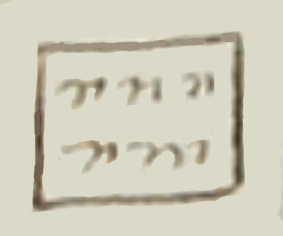mandamiento (CST34)
This painting of the simplex glyph for the term mandamiento (a ruling or an order) shows a rectangular piece of paper with two horizontal rows of what is probably alphabetic writing. The companion Nahuatl text says that this order, obtained from the government in Mexico City, related to the fact that some people had fled Texupan to live in Tonallan (perhaps the modern city of Tonalá in the state of Jalisco?). Kevin Terraciano (Codex Sierra, 2021, 155, note 90) suggests that these people were fleeing a forced congregation program.
Stephanie Wood
The Spanish colonizers introduced and instructed Nahua notaries in alphabetic writing–even while hieroglyphic writing would continue through most of the sixteenth century. See some other examples below.
Stephanie Wood
1550–1564
Jeff Haskett-Wood
escribir, escritura, documentos, manuscritos alfabéticos, gobierno

mandamiento (a loanword from Spanish taken into Nahuatl) a ruling or an order, https://nahuatl.wired-humanities.org/content/petlatl
mandamiento
Stephanie Wood
Códice Sierra-Texupan, plate 34, page dated 1560. Origin: Santa Catalina Texupan, Mixteca Alta, State of Oaxaca. Kevin Terraciano has published an outstanding study of this manuscript (Codex Sierra, 2021), and in his book he refers to alphabetic and “pictorial” writing, not hieroglyphic writing. We are still counting some of the imagery from this source as hieroglyphic writing, but we are also including examples of “iconography” where the images verge on European style illustrations or scenes showing activities. We have this iconography category so that such images can be fruitfully compared with hieroglyphs. Hieroglyphic writing was evolving as a result of the influence of European illustrations, and even alphabetic writing impacted it.
https://bidilaf.buap.mx/objeto.xql?id=48281&busqueda=Texupan&action=search
The Biblioteca Digital Lafragua of the Biblioteca Histórica José María Lafragua in Puebla, Mexico, publishes this Códice Sierra-Texupan, 1550–1564 (62pp., 30.7 x 21.8 cm.), referring to it as being in the “Public Domain.” This image is published here under a Creative Commons license, asking that you cite the Biblioteca Digital Lafragua and this Visual Lexicon of Aztec Hieroglyphs.






